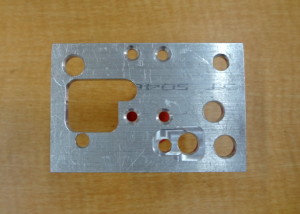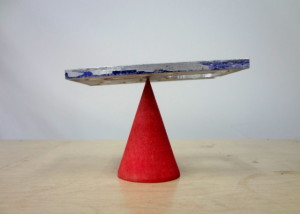Balancing Act
We’ve been discussing center of mass in class recently. While this powerful idea extends well beyond its physical interpretation, it’s good to frame the conversation around the idea of balancing objects on their centroids.
One student was inspired by the claim that all physical objects have centroids, and that they can be found fairly easily. So he took a small plate of aluminum, drilled a bunch of random holes in it, and tried to find its center of mass.
He claimed he had done it. But how could we test his hypothesis? It seemed like there was only one way!
It took us a while, and a few attempts, but we were able to do it! It created a nice little challenge for us, and a nice physical experience with the center of mass.


4 Comments
Matt Skoss · April 7, 2014 at 9:49 am
The student’s randomly drilled holes is a nice lead in to find the population centres for a country, state or city, and how they have shifted over time.
Article at: http://www.australiancommunities.com.au/SocialAnalysis/2012/The-Heart-of-Australia_Analysis-of-our-Population-Centre_McCrindle-Research.pdf
Jerome Dancis · April 7, 2014 at 11:10 am
It is a bit trickier to do this check, when the center of gravity is in one of the holes, that has been
cut out.
I am curious as to how the student determined the center of gravity of this object.
MrHonner · April 7, 2014 at 3:13 pm
I believe, initially, the center of mass was located wihtin one of the holes. The student cleverly navigated this obstacle by routing off additional material to move the center of mass out of the hole.
The center of mass was estimated using the old hanging trick: hang the object, drop a plumb-line, draw the vertical, repeat. The intersectino is the center of mass.
Jerome Dancis · April 7, 2014 at 4:56 pm
The old hanging trick would also work when the center of mass was located wihtin one of the holes.
Was the student clever enough to reinvent the old hanging trick?